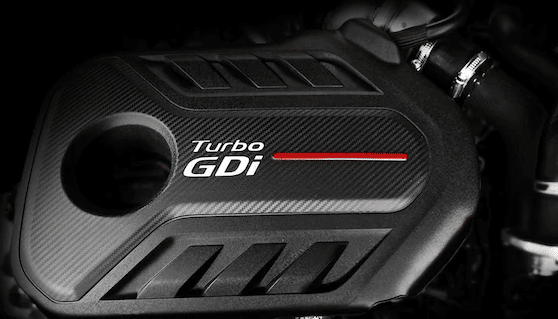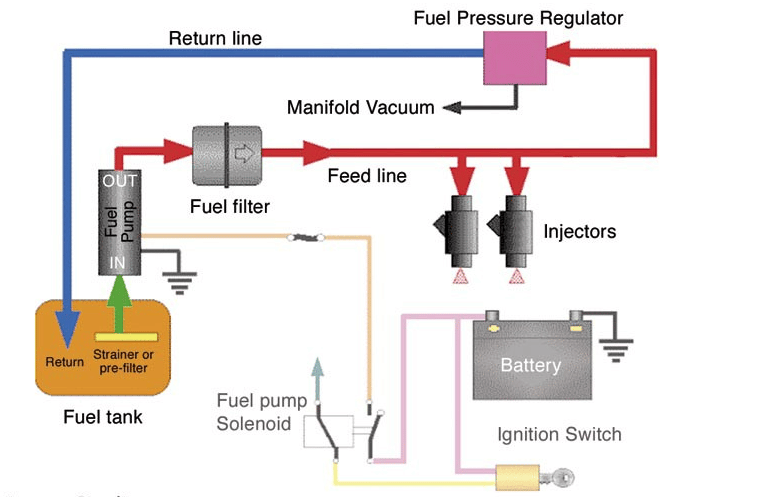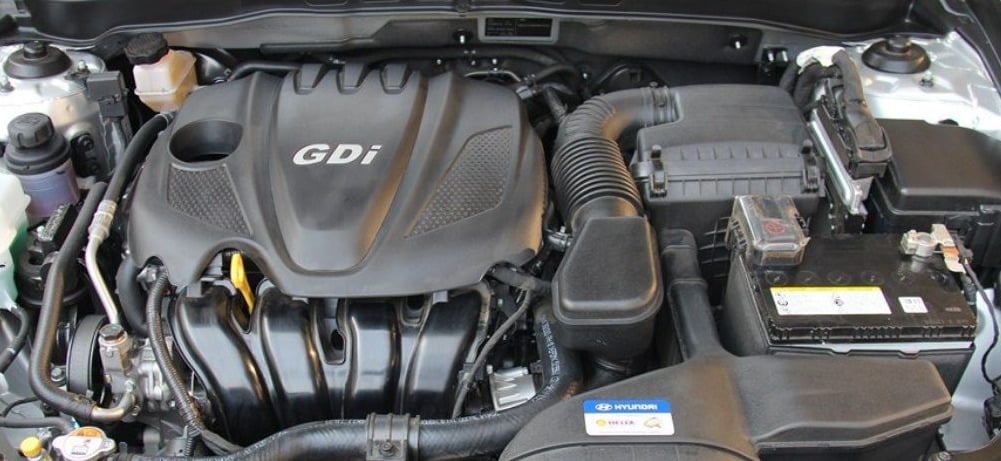A GDI engine injects highly-pressurized fuel into the cylinders. This improves combustion efficiency and prevents premature ignition. However, some of these fuel injections can clog. In such a case, it is important to check the fuel system. To do this, you should inspect the injectors, valves, and other components to determine the source of clogging.
GDI fuel system
A GDI fuel system produces a highly efficient air-fuel mixture for vehicles with variable valve timing. The fuel delivery system can be regulated by the engine’s engine control unit, also called the ECU. This enables accurate fuel-air mixtures, resulting in improved engine performance and fuel economy. The GDI fuel system can produce full power, ultra-lean, or stoichimetric air-fuel mixtures. It can also accommodate variable valve timing and intake manifold systems.
In recent years, the use of GDI technology has increased, especially in Europe, with BMW and KIA stepping up the effort. While the technology has been available for some time, manufacturers in the United States have not adopted it as quickly as their European and Asian counterparts. However, Ford is planning to implement a GDI system into most of its cars and is expecting customers to see a significant increase in fuel efficiency. Similarly, Toyota, Lexus, BMW, and Volkswagen are also planning to introduce the system into their vehicles.

While GDI is more efficient than carburetor systems, there are some drawbacks to the system. The main disadvantage is that the gasoline traveling through the intake port does not contain any valve cleaning action. This can result in an increase in carbon deposits in a GDI engine. However, third-party manufacturers of GDI fuel systems can offer oil catch tanks that can be used to prevent this problem.
GDI valves
GDI engines inject fuel at high pressure directly into the cylinder, meaning the fuel gets finely atomised and is more efficient for combustion. This results in better power and less emissions. However, a downside to this type of engine is that fuel no longer gets to the valves and deposits can form. As a result, you should always take care to keep the valves clean.
Traditionally, gasoline was injected into the cylinder head and onto the intake valves to clean them. However, this can result in valve deposits that are too difficult to remove with conventional cleaning methods. In order to prevent this, most GDI engines have intake valves that are closed. This prevents fuel from touching the valve faces, which means that the gas can’t wash away carbon and other contaminants from the valves.
As a result, carbon deposits build up on the intake valves. This causes turbulence and restricts airflow into the cylinders. This can affect driveability and performance. As the carbon deposits grow thicker, it can cause valve problems. If the carbon deposits are not removed, they can lead to a failed combustion.
Late-model engines with Gasoline Direct Injection are susceptible to deposits. Motor oils that are designed to reduce deposits are now available. Look for an oil with the GF-6 or “SP” rating from the American Petroleum Institute. This oil will help prevent buildup of deposits on the valves, which can cause them to malfunction and damage to the engine.
GDI injectors
Choosing the right GDI injectors for a gas engine is important for fuel efficiency and performance. GDI systems operate with a computer-controlled fuel delivery system, called the Engine Management System (EMS). The EMS monitors and controls the engine, ensuring correct emissions and performance. The system has several features, many of which apply to GDI injectors. GDI injectors work on the same basic principle as the electronic injector, but they must be able to meet higher cylinder pressures. GDI injectors work with a higher pressure ratio than port/manifold injectors, reaching up to 40:1 for some models and 60:1 for others.
The fuel sprays on the intake valve instead of flowing through the valve, which helps prevent deposits and clogging. Older injectors tended to wash away carbon from the valve surface with flow. But the spray used by GDI systems requires the intake valves to be actively cleaned. In addition to clogged valves, oxidized fuel molecules can polymerize and form carbon deposits that double back in the crankcase ventilation system.
GDI injectors offer improved fuel economy and lower emissions, while maintaining vehicle fuel quality. Today’s sophisticated ECUs allow for precise metering and atomization of fuel. The result is better mileage, fewer emissions, and less waste. Despite these benefits, GDI systems are not without their downsides. GDI injectors require more expensive parts and are more complicated to manufacture.
GDI fuel system clogging
Clogging of the GDI fuel system can be a serious problem. During engine operation, cooked fuel deposits can foul the injectors and alter engine timing. Carbon build-up can also damage the injectors because it acts as an insulator. Furthermore, it can fall off the valves and settle at the bottom of the engine. This could lead to wear and tear on the engine’s moving parts.
To prevent clogging, you can use cleaners and fuel additives. Premium fuel is also recommended. Premium gasoline may help wash away deposits. You can also visit a NAPA AUTO PARTS store or the NAPA website to learn more about the GDI fuel system. The company offers a variety of products for preventing clogging in a GDI engine.

Another way to stop clogging in a GDI engine is to use a GDI injector cleaner. A GDI injector cleaner is a concentrated solution that can effectively clean the injectors and intake valves. A similar product can clean the entire fuel system, including the nozzles.
A GDI engine also needs regular servicing. Most vehicle owners don’t realize that a GDI engine requires regular maintenance. A GDI engine is prone to carbon build-up and clogging. A GDI service can help your engine perform at its optimal level. It may also result in a higher fuel economy.
GDI valve deposits
Late model cars using Gasoline Direct Injection (GDI) often develop deposits on the intake valves. This problem can be solved by changing the motor oil on a regular schedule. New formulations of motor oils are available that have been proven to reduce the buildup of deposits. These oils will be marked with the International Lubricant Standardization and Approval Committee (ILSAC) “GF-6” or “SP” designation.
Intake valve deposits may hinder proper valve closure, resulting in burned valves and huge repair bills. GDI valve cleaning is an important maintenance step that informed customers understand. Other methods of removing these deposits include mechanical teardown or walnut shell blasting. Informed customers assume that they know more about GDI problems than uninformed service providers.
A GDI valve cleaner can also remove deposits on other engine surfaces. Polyether Amine (PEA) is an effective cleaning agent that can dissolve hardened carbon deposits from GDI valves and other engine parts when applied in the correct concentration and conditions. CRC GDI IVD Intake Valve & Turbo Cleaner contains the highest concentration of PEA, which can effectively remove up to 46 percent of carbon from intake valves in 60 minutes. This product will also remove up to 85 percent of carbon deposits from cylinder heads.
Keeping your engine parts clean is crucial for preserving engine performance. Regular oil changes and fuel system cleaners will help you maintain the GDI valves and other engine parts. Ultrasonic cleaning can be another way to remove carbon build-up on your engine. Ultrasonic cleaning uses high frequency sound waves to clean engine components and even hard-to-reach crevices.
GDI valve cleaning
GDI engine valve cleaning is an important preventative maintenance routine. While in-tank cleaners are effective for “wet” valves, they’re not always effective for “dry” valves. Fortunately, there are ways to clean both types. An intake valve cleaner is an excellent choice.
A GDI engine’s fuel-air mixture contains gasoline that is an excellent solvent. This cleaner can also help remove carbon fouling that can build up on intake valves. This is a common problem in GDI engines. Fuel-air mixtures are typically ultra-lean, minimizing fuel consumption. However, this method does have a disadvantage: gasoline will not touch the face of the intake valves, preventing fuel-washing.
Before cleaning the valves, it is necessary to decarbonize the engine. This can be done manually without disassembling the cylinder head. However, be careful not to use rotating brushes, as these can become stuck behind valve rods. Often, they are not removable without dismantling the engine.
Carbon buildup can be a major issue in GDi engines, and the problem can lead to engine failure before 60,000 miles. For this reason, it’s crucial to sand blast the valves and clean them. Additionally, it’s important to service the injectors. Without a thorough cleaning, the injectors can fail to function properly.
In addition to ensuring your engine is clean, you should also check for carbon buildup in the PCV system. The PCV system contributes a significant percentage of carbon to the intake system. To reduce this, you can install oil catch cans in the PCV hose. This prevents oil from entering the intake system and reduces the amount of oil in the air filter.
